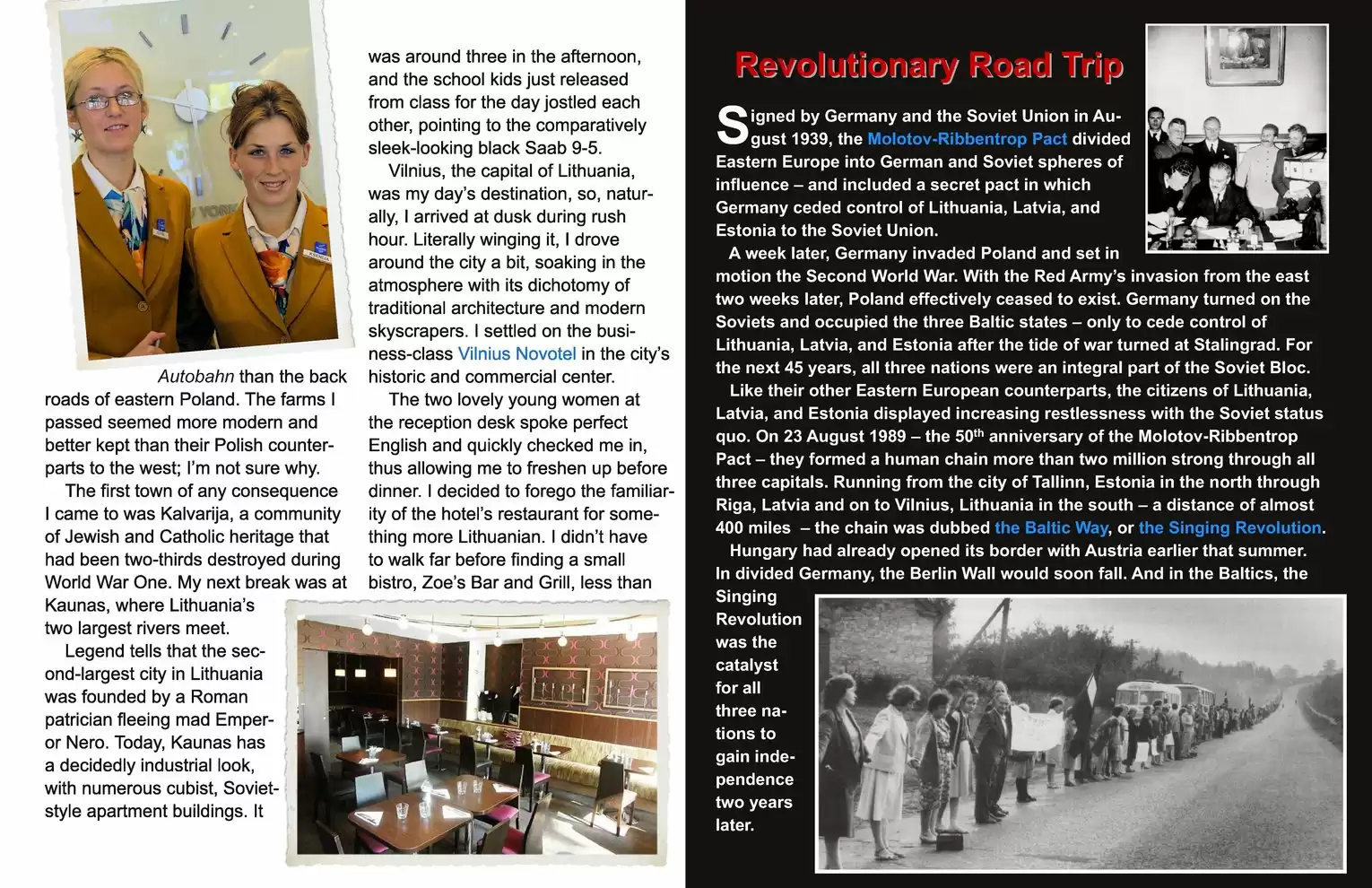
Autobahn than the back roads of eastern Poland. The farms I passed seemed more modern and better kept than their Polish counterparts to the west; I'm not sure why.
The first town of any consequence I came to was Kalvarija, a community of Jewish and Catholic heritage that had been two-thirds destroyed during World War One. My next break was at Kaunas, where Lithuania's two largest rivers meet. Legend tells that the second-largest city in Lithuania was founded by a Roman patrician fleeing mad Emperor Nero. Today, Kaunas has a decidedly industrial look, with numerous cubist, Soviet-style apartment buildings. It was around three in the afternoon, and the school kids just released from class for the day jostled each other, pointing to the comparatively sleek-looking black Saab 9-5.
Vilnius, the capital of Lithuania, was my day's destination, so, naturally, I arrived at dusk during rush hour. Literally winging it, I drove around the city a bit, soaking in the atmosphere with its dichotomy of traditional architecture and modern skyscrapers. I settled on the business-class Vilnius Novotel in the city's historic and commercial center.
The two lovely young women at the reception desk spoke perfect English and quickly checked me in, thus allowing me to freshen up before dinner. I decided to forego the familiarity of the hotel's restaurant for something more Lithuanian. I didn't have to walk far before finding a small bistro, Zoe's Bar and Grill, less than
| Previous Page | Next Page |
Contents
Features:
- Old Faithful Road Trip
- Tank of Gas Adventure: Berks County Wine Trail
- How to Survive Your First RV Road Trip
- Driving the Baltic Way
Departments:
- Behind the Wheel: 2011 Mitsubishi Lancer
- Behind the Wheel: 2011 Volkswagen Touareg Hybrid
- Not Found on eBay
- Travel and Book Reviews
- Travel News
- Auto News
- Cruising Round-Up
- Contributors